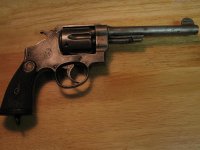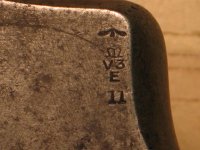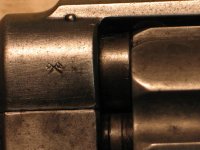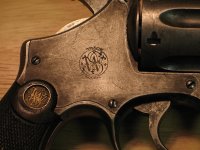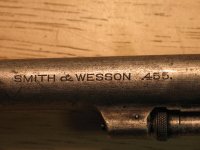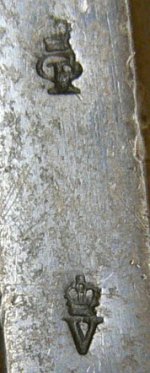sagela
Member
My .455 HE 2nd model has the broad arrow and the crossed pennants... I need to understand more about them. My impression was the arrow was British and the pennants were Canadian. Straighten me out, please.
Anybody able to interpret the stampings under the broad arrow? I've never followed this line of S&W interest before and am warming to the subject.
This old piece has a nice, shiny bore, faint traces of bluing in the corners, but only one little area on the barrel of pitting.
By the serial number, I'd guess it was just about the last of the run... 1917? (#72467)
Am I also correct it was probably made a few years before heat treating of cylinders was initiated?
Finally, given its lack of bluing, is it worth keeping it as is? It's entirely original as nearly as I can tell and the sideplate screws sort of indicate it hasn't been opened up much or at all.
Thing is, this would make a great trail companion in .45Colt. It'd be difficult to beat it up any worse. It is timed perfectly and locks up tight.
Anybody able to interpret the stampings under the broad arrow? I've never followed this line of S&W interest before and am warming to the subject.
This old piece has a nice, shiny bore, faint traces of bluing in the corners, but only one little area on the barrel of pitting.
By the serial number, I'd guess it was just about the last of the run... 1917? (#72467)
Am I also correct it was probably made a few years before heat treating of cylinders was initiated?
Finally, given its lack of bluing, is it worth keeping it as is? It's entirely original as nearly as I can tell and the sideplate screws sort of indicate it hasn't been opened up much or at all.
Thing is, this would make a great trail companion in .45Colt. It'd be difficult to beat it up any worse. It is timed perfectly and locks up tight.

